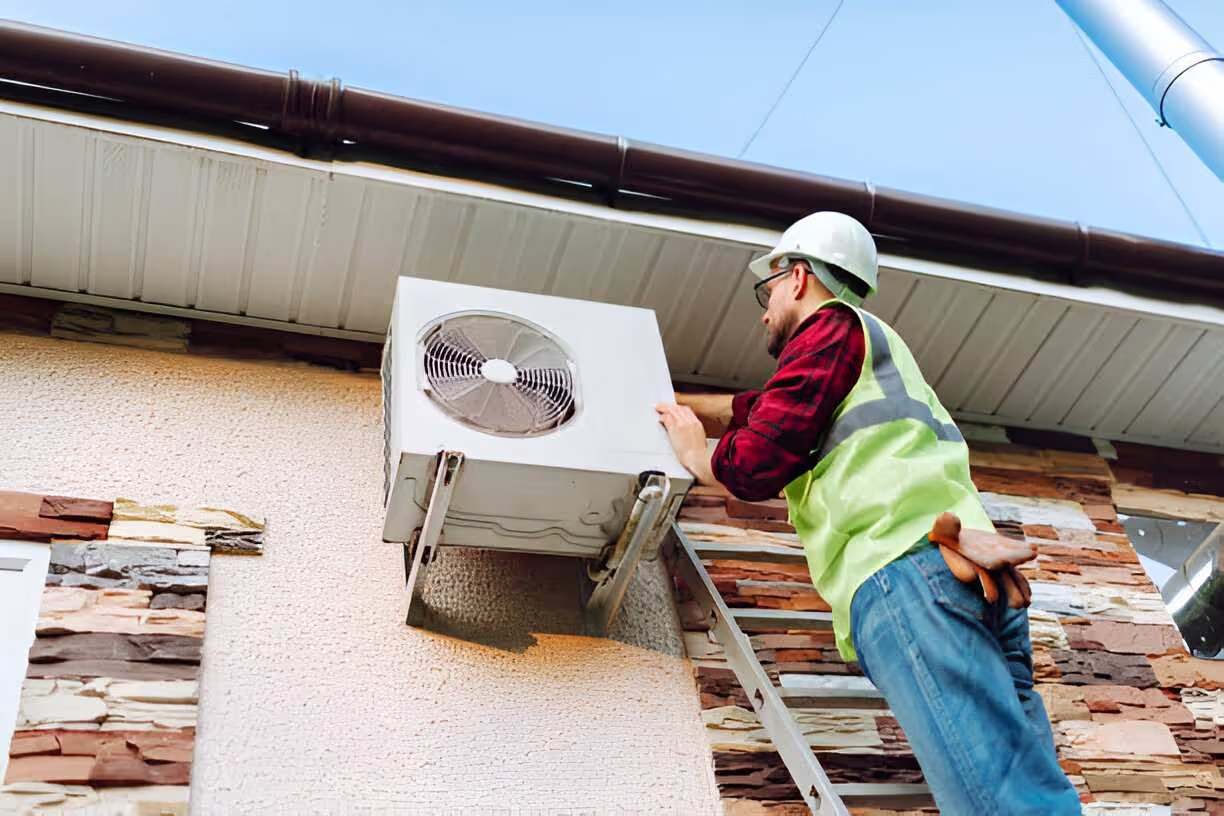Heat Pump Repair in Lake Wales, FL


Common heat pump issues in Lake Wales, FL
- Weak or uneven airflow: Clogged filters, dirty evaporator coils, or failing blower motors are common in humid environments where dust and pollen build up quickly.
- Warm air when cooling is selected: Low refrigerant (leak), compressor failure, or reversing valve problems can cause the system to blow warm air.
- Short cycling or frequent on/off cycles: Faulty thermostats, low refrigerant, or compressor electrical faults lead to short cycles that raise energy bills and stress components.
- Ice on the outdoor coil: Defrost control or refrigerant issues cause icing; in Florida, poor airflow and high humidity make this more likely when the system is running inefficiently.
- Loud or unusual noises: Squealing, grinding, banging, or rattling point to failing fan motors, bearings, loose panels, or compressor problems.
- Tripped breakers or blown fuses: Electrical faults such as bad capacitors, contactors, or shorted motors can overload circuits.
- Reduced heating performance in cooler months: Heat pump inefficiency in heat mode may be due to refrigerant issues, defrost failures, or reversing valve malfunction.
- Visible oil spots or hissing sounds: Classic signs of a refrigerant leak.
How technicians diagnose heat pump failures
A systematic diagnostic approach prevents unnecessary parts replacement and targets root causes:
- Visual inspection: Check outdoor unit condition, coils, fan blades, wiring, and signs of leaks or corrosion.
- Airflow assessment: Measure supply and return temperatures and inspect filters, ductwork, and blower wheel.
- Electrical testing: Use a multimeter to test capacitors, contactors, relays, and motor amp draw against manufacturer specifications.
- Refrigerant system analysis: Connect gauges to measure operating pressures and superheat/subcooling; this distinguishes low charge from mechanical restriction.
- Leak detection: Use electronic leak detectors, UV dye, or bubble tests on fittings and brazed joints to pinpoint leaks.
- Control and thermostat checks: Verify thermostat calibration, wiring, and control board operations.
- Operational run test: Observe the system through a full cooling or heating cycle to catch intermittent faults such as short cycling or defrost failures.
Common repairs and what they involve
- Refrigerant leak repair and recharge: Locating and repairing the leak (brazing, replacing fittings, or section replacement) is required before recharging. EPA-certified handling is required for refrigerant work.
- Compressor repair or replacement: A failing compressor may be replaced if repair is not feasible. Replacement includes recovery of old refrigerant, new compressor installation, and evacuation and recharge of the system.
- Fan motor and blower motor replacement: Motors and bearings wear out in humid climates. Replacements include motor, capacitor checks, and balancing the fan assembly.
- Capacitor and contactor replacement: These common electrical components fail due to heat and voltage variations; replacement restores reliable starting and operation.
- Control board and sensor repairs: Replacing faulty boards, defrost controls, or sensors corrects intermittent and sequencing problems.
- Duct and airflow repairs: Sealing leaks, removing obstructions, and cleaning coils improves efficiency and reduces recurrent component stress.
- Reversing valve and expansion device repairs: These are less common but essential when the system will not switch between heating and cooling properly or shows abnormal pressures.
Typical repair timelines
- Initial diagnostic: 1 to 2 hours for a complete inspection and testing.
- Minor electrical fixes (capacitor, contactor, thermostat): 30 minutes to 2 hours.
- Fan or blower motor replacement: 1 to 3 hours.
- Refrigerant leak repair and recharge: 2 to 6 hours depending on access and whether parts need replacement.
- Compressor replacement: 4 to 8 hours; longer if hard-to-access equipment or special parts are required.
- Complex or parts-backordered repairs: 1 to several days if specific OEM components must be sourced.
Timelines vary by system age, accessibility, and whether replacement parts are immediately available. Technicians will typically perform a diagnostic visit before scheduling longer repairs.
Warranty and service guarantees
Manufacturer warranties typically cover major components for set periods — check your system documentation. For on-site repairs, professional services often provide limited service warranties on parts and labor for a defined period after repair. Always confirm warranty terms for replaced components and save service records; documented maintenance history helps protect both manufacturer and repair warranties.
Emergency repair options and safety
Lake Wales homeowners may face sudden failures during heat waves or after storms. Emergency response typically focuses on:
- Safety first: Isolating faulty circuits, stopping refrigerant leaks, and securing loose electrical components.
- Temporary measures: Short-term fixes to restore cooling while arranging permanent repairs, such as installing a hard-start kit to keep a compressor running until a replacement is procured.
- Prioritization: Critical failures that create safety hazards or complete loss of cooling are triaged ahead of non-critical issues.
Note: Refrigerant handling and major compressor work legally require certified technicians.
Preventative maintenance to avoid repeat failures
- Replace filters every 1 to 3 months during peak seasons.
- Keep a 2-foot clearance around the outdoor unit from vegetation, debris, and sprinklers. Regularly clean coils to combat pollen and humidity-related buildup.
- Schedule seasonal tune-ups before summer and before cooler months to check defrost controls and refrigerant levels.
- Protect equipment from power surges with whole-home surge protection or a dedicated surge protector for the outdoor unit.
- Maintain ducts and insulation to ensure proper airflow and reduce strain on the system.
- Address minor noises or performance drops early — small issues often precede major failures.
In Lake Wales, FL, effective heat pump repair combines rapid, accurate diagnosis with repairs suited to humid, storm-prone conditions and local usage patterns. Understanding common symptoms, the diagnostic process, typical repairs and timelines, warranty considerations, emergency approaches, and maintenance best practices puts you in a strong position to preserve comfort and system life in your home.
Service Areas


